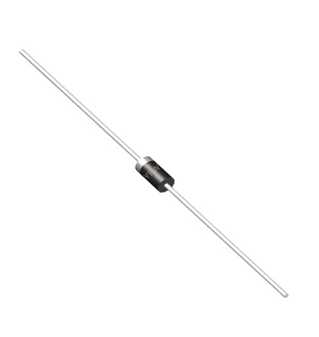Date:2025-06-05 Categories:Product knowledge Hits:381 From:Guangdong Youfeng Microelectronics Co., Ltd
As a general rule, the VR rating should be at least 2 times the maximum expected reverse voltage. For instance, if the maximum reverse voltage in your circuit is 30V, a Schottky diode with a VR rating of 60V or more would be suitable.
Forward Voltage Drop
As mentioned earlier, the forward voltage drop (VF) of Schottky diodes is relatively low. However, different models may have slightly different VF values. In applications where power efficiency is critical, such as battery-powered devices, it is advisable to choose a diode with the lowest possible VF to minimize power loss.
Temperature Considerations
Schottky diodes have a positive temperature coefficient for the forward voltage drop, meaning that VF decreases slightly as the temperature increases. However, they also have a limited operating temperature range. It is important to check the maximum operating temperature (Tmax) specified by the manufacturer and ensure that the diode will not be exposed to temperatures exceeding this limit in your application.
Most Schottky diodes have a Tmax in the range of -55°C to +125°C, but some high-temperature versions can operate up to higher temperatures.
Application Circuits and Usage
Rectification in Switching Power Supplies
Schottky diodes are widely used in rectification stages of switching power supplies due to their low forward voltage drop and fast switching speed. In a typical buck (step-down) switching power supply, the Schottky diode is used as the freewheeling diode to allow current to flow when the main switching transistor is turned off.
To use a Schottky diodes in this application, connect it in parallel with the inductor, with the cathode connected to the output voltage rail and the anode connected to the ground or the switching node. Make sure that the diode's forward current rating is sufficient to handle the peak inductor current, and the reverse voltage rating is higher than the maximum voltage that appears across the diode during the switching process.
Voltage Clamping and Protection
Schottky diodes can be used for voltage clamping and protection in various circuits. For example, in inductive load circuits, such as relays or motors, when the load is turned off, a high voltage spike is generated due to the inductive kickback. Connecting a Schottky diodes across the inductor (in parallel with the load) can clamp this voltage spike to a safe level, protecting the driving circuit.
In this case, the diode should be connected with the cathode to the positive supply voltage and the anode to the negative supply voltage or ground, depending on the circuit configuration. The reverse voltage rating of the diode should be at least equal to the supply voltage to ensure effective clamping.

Previous: Classification, Structure, and Principle of MOSFET